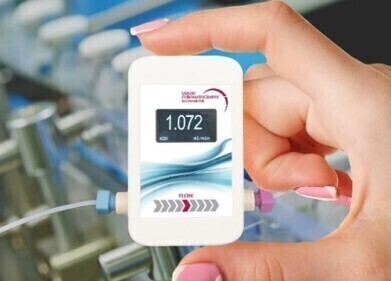HPLC, UHPLC
Ditch the Antiperspirant — Chromatography Finds the Sweaty Biomarkers
Nov 11 2015
As technology advances and our knowledge about the body and its functions improves — medicine searches out new diagnostic, prognostic and predictive indicators to improve our ability to fight disease and illness. These indicators are known as biomarkers, and they will be increasing important as personalised medicine becomes more prevalent.
Sometimes changes are not about technology though — they are simply to help a patient’s comfort and experience. Many people are anxious or dislike invasive medical procedures — getting an injection or having a blood sample taken — so medical researchers search for other, non-invasive methods where possible. An example would be a DNA sample which can be taken from inside the cheek or the new flu vaccine which can be given to young children using a nasal spray.
The search for easily accessible biomarkers has now looked at the body’s largest organ, and in future you might have to have a sauna before you see the doctor. Welcome to sweaty medicine.
Composition of sweaty armpits
The largest organ in the body — the skin — is also the most accessible part of the body, and a team of researchers have been studying a product produced through our skin — sweat — to see if it can give any clues to our health. Sweat is mainly water but it also contains various minerals and trace metals. Its composition varies between individuals and is also dependant on what you have eaten and why you are sweating — and as well as cooling you down it is also part of the system that excretes toxins and waste products.
Importantly for researchers looking at protein biomarkers, sweat also contains proteins and it has been previously reported that these biomarkers are changed when people are ill. To take this further, a combined team from Hungary and the USA has recently published a paper which they hope can act as a starting point for non-invasive research into sweat biomarkers.
LC-MS on your sweat
In the study, reported in the Journal of the European Academy of Dermatology and Venereology, the aim was:
‘to examine the qualitative and quantitative protein pro?le of the sweat collected from healthy volunteers, in order to gain more insight into the protein composition of healthy human sweat’.
They did this by sampling the sweat from 20 healthy people after they had been in a sauna. The samples were cleaned up and the peptides separated using liquid chromatography and then identified using mass spectroscopy. Analysis of proteins and peptides is discussed in detail in this article, Improvement in Speed and Reproducibility of Protein Digestion, and Peptide Quantitation Utilising Novel Sample Preparation Technology in a Full Solution Workflow.
The research identified several potential protein biomarkers in sweat — they form a chemical barrier on the skin to help protect us from invaders. The researcher hope that the work can act as a platform allowing further biomarker work on sweat to be carried out.
So, a perfect excuse not to shower. Nose pegs anyone?
Image by Matthew Hurst
Digital Edition
Chromatography Today - Buyers' Guide 2022
October 2023
In This Edition Modern & Practical Applications - Accelerating ADC Development with Mass Spectrometry - Implementing High-Resolution Ion Mobility into Peptide Mapping Workflows Chromatogr...
View all digital editions
Events
Jan 20 2025 Amsterdam, Netherlands
Feb 03 2025 Dubai, UAE
Feb 05 2025 Guangzhou, China
Mar 01 2025 Boston, MA, USA
Mar 04 2025 Berlin, Germany



.jpg)








